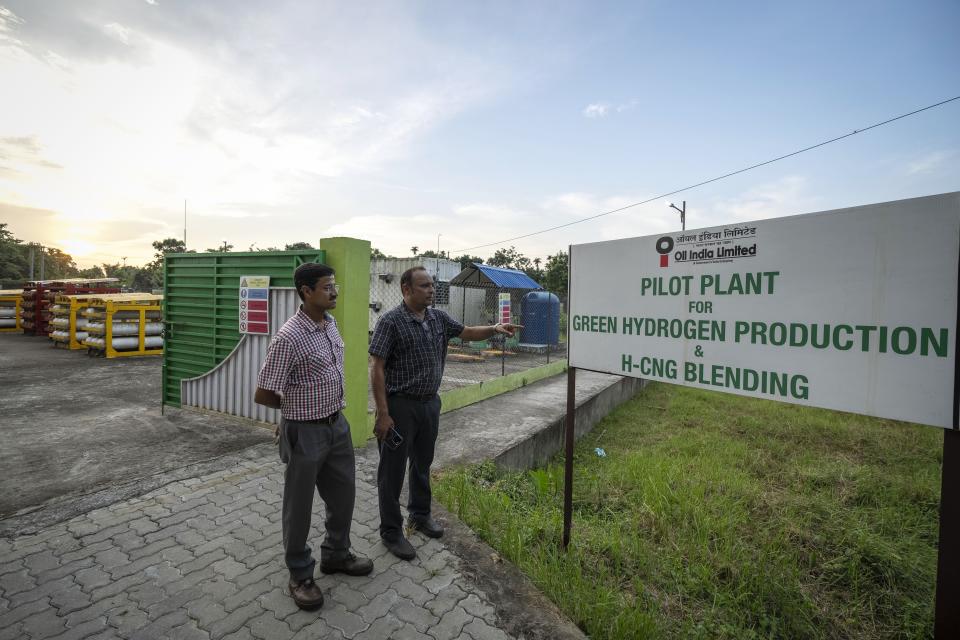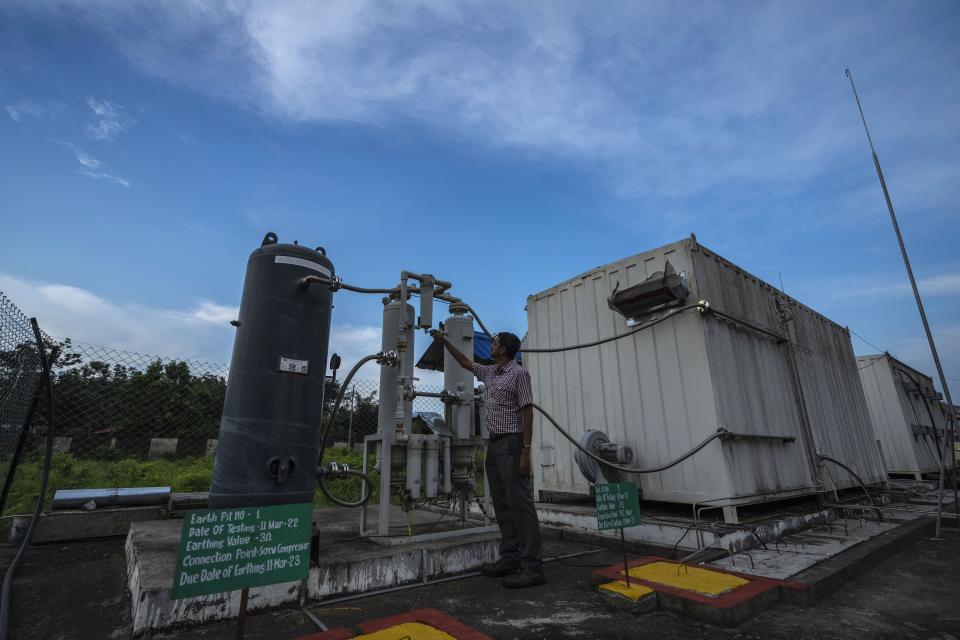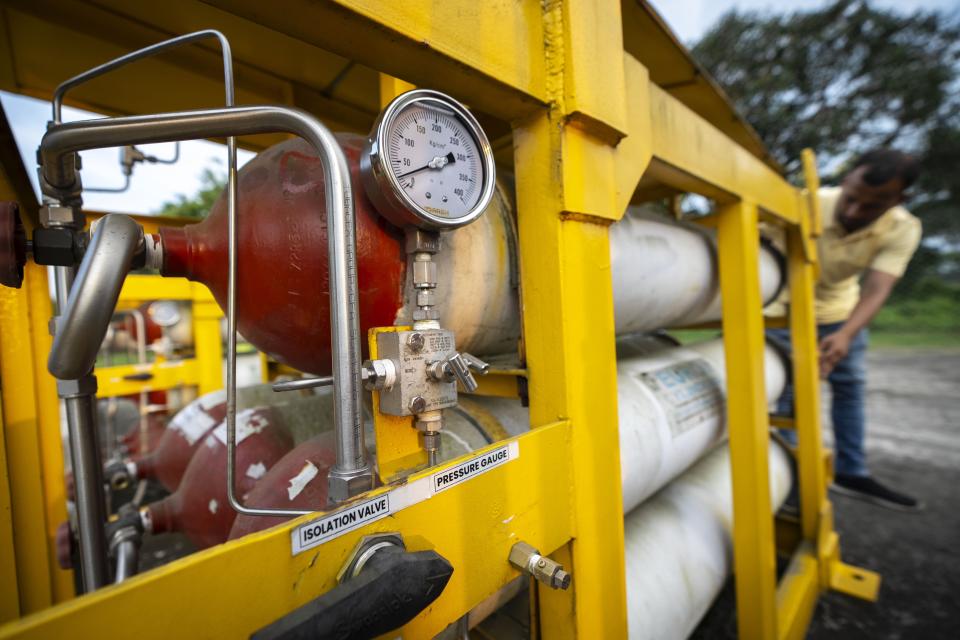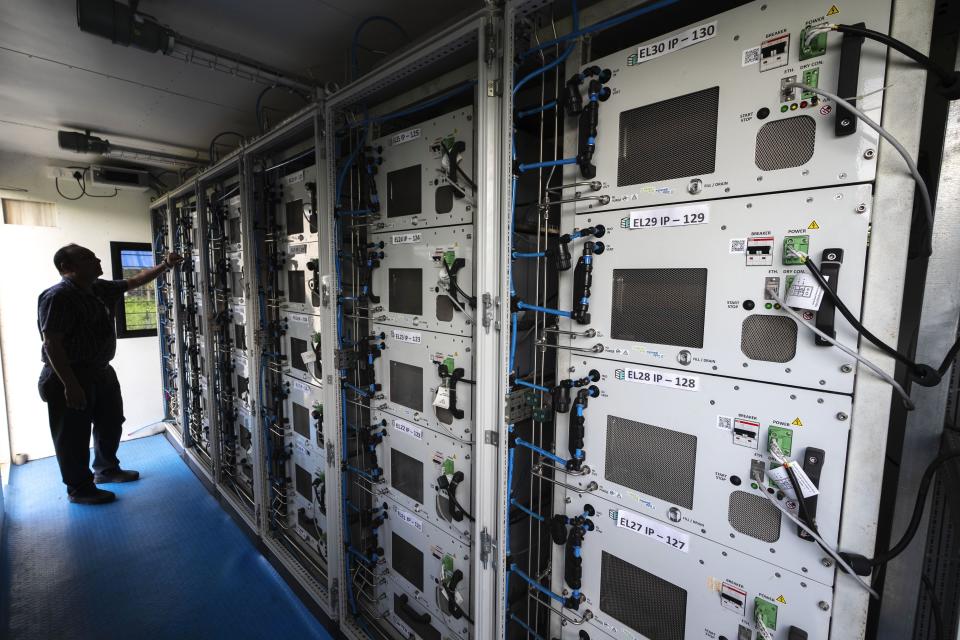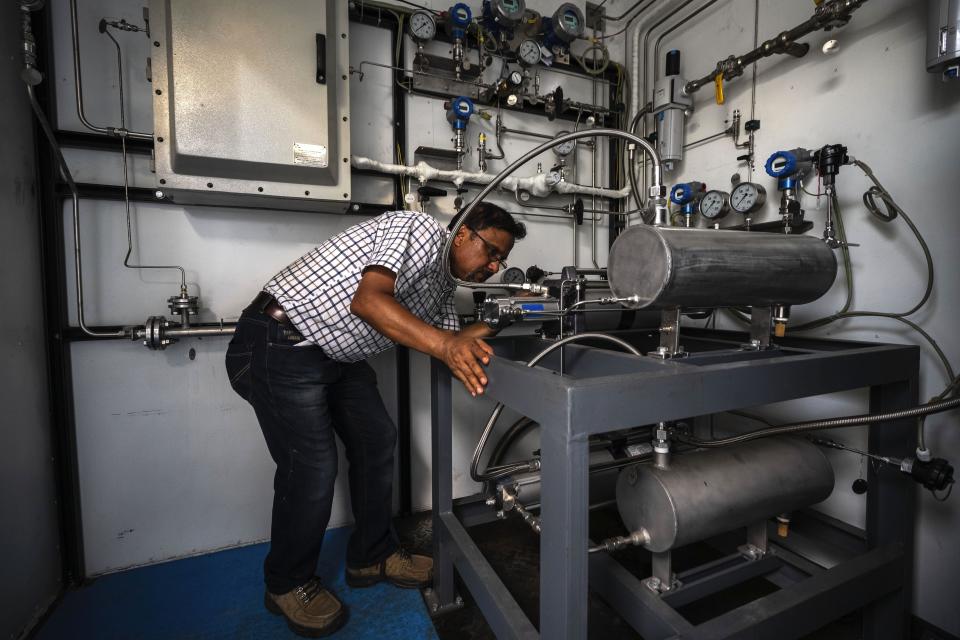BENGALURU, India (AP) — Green hydrogen is being touted around the world as a clean energy solution to take the carbon out of high-emitting sectors like transport and industrial manufacturing.
The India-led International Solar Alliance launched the Green Hydrogen Innovation Centre earlier this year, and India itself approved $2.3 billion for the production, use and export of green hydrogen. Global cooperation on green hydrogen manufacturing and supply is expected to be discussed by G-20 leaders at this week's summit in New Delhi.
WHAT IS GREEN HYDROGEN?
Hydrogen is produced by separating that element from others in molecules where hydrogen occurs. For example, water — well known by its chemical symbol of H20, or two hydrogen atoms and one oxygen atom — can be split into those component atoms through electrolysis.
Hydrogen has been produced and used at scale for over a century, primarily to make fertilizers and plastics and to refine oil. It has mostly been produced using fossil fuels, especially natural gas.
But when the production is powered by renewable energy, the resulting hydrogen is green hydrogen.
The global market for green hydrogen is expected to reach $410 billion by 2030, according to analysts, which would more than double its current market size.
However, critics say the fuel is not always viable at scale and its ‘green’ credentials are determined by the source of energy used to produce it.
WHAT CAN GREEN HYDROGEN BE USED FOR?
Green hydrogen can have a variety of uses in industries such as steelmaking, concrete production and manufacturing chemicals and fertilizers. It can also be used to generate electricity, as a fuel for transport and to heat homes and offices. Today, hydrogen is primarily used in refining petrol and manufacturing fertilizers. While petrol would have no use in a fossil fuel-free world, emissions from making fertilizer — essential to grow crops that feed the world — can be reduced by using green hydrogen.
Francisco Boshell, an energy analyst at the International Renewable Energy Agency in Abu Dhabi, is optimistic about green hydrogen’s role in the transition to clean energy, especially in cases where energy from renewables like solar and wind can't practically be stored and used via battery — like aviation, shipping and some industrial processes.
He said hydrogen's volatility — it's highly flammable and requires special pipelines for safe transport — means most green hydrogen will likely be used close to where it is made.
ARE THERE DOUBTS ABOUT GREEN HYDROGEN?
That flammability plus transport issues limit hydrogen's use in “dispersed applications” such as residential heating, according to a report by the Energy Transitions Commission, a coalition of energy leaders committed to net-zero emissions by 2050. It also is less efficient than direct electrification as some energy is lost when renewables are converted to hydrogen and then the hydrogen is converted again to power, the report said.




